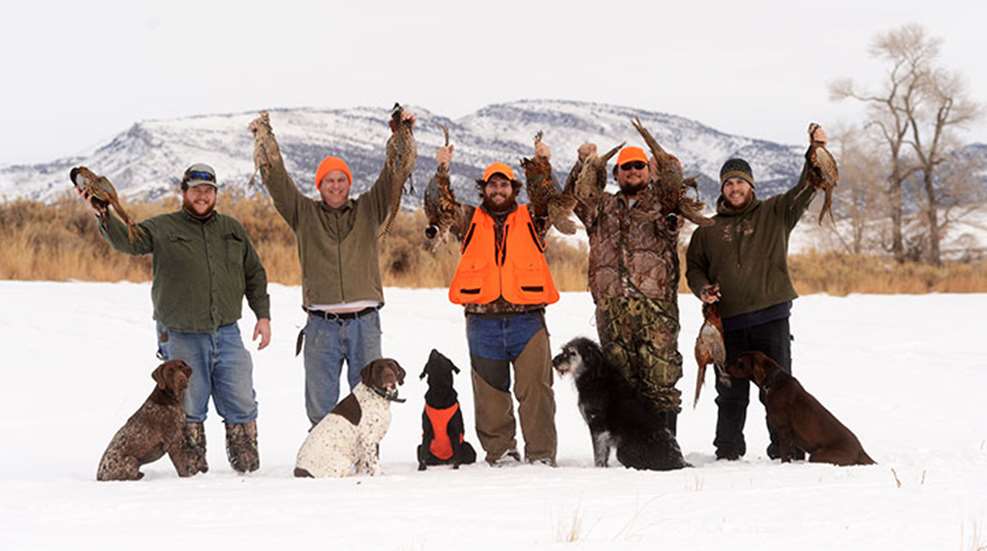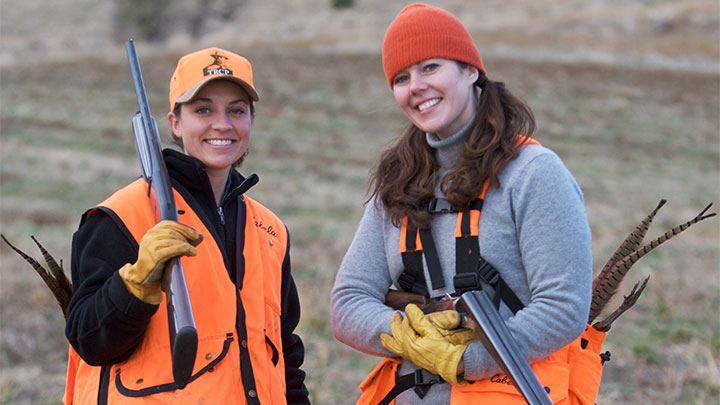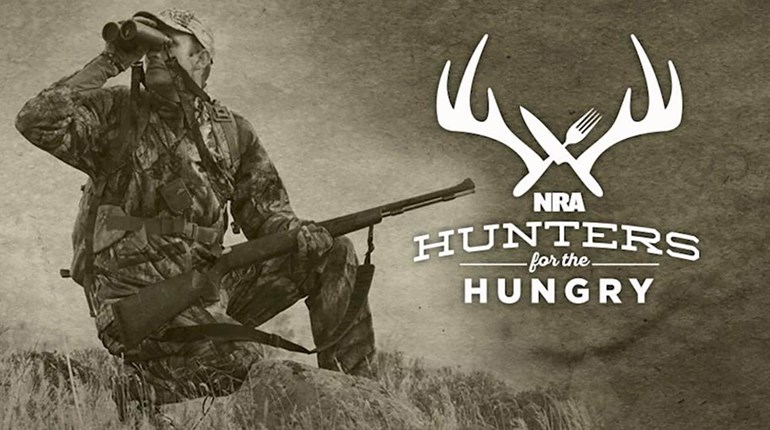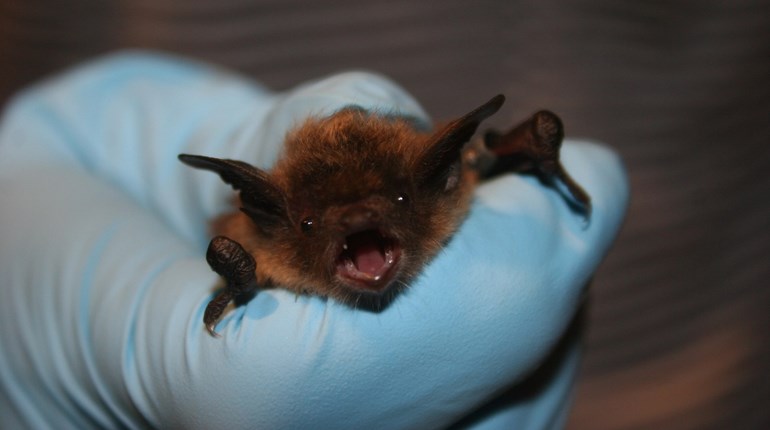
For well more than a century, it’s safe to say wildlife and the wild places it inhabits have benefited because of hunters—and, by extension, NRA members.
That last part is not a stretch. Next to self-defense hunting is one of the primary ways Americans exercise their Second Amendment right to keep and bear arms. Indeed, across the expanse of the 19th century, hunting was perhaps the primary way Americans exercised that right while our society stretched coast-to-coast and in large part fed itself off game.
But toward the end of the 19th century, unregulated hunting, unregulated development, poor land-use practices, pioneer settlement of the West and ongoing Native American/U.S. government conflict all coincided to devastate game and its habitat.
Then something remarkable happened.
2021 marks the 150th anniversary of the founding of the National Rifle Association of America (NRA). This column is the first in a series of 12 that highlight during this celebratory year the people, trends and firearms NRA members have witnessed over the past 150 years—and in some cases when NRA members have been part of historical achievements firsthand. This month, we celebrate the restoration of America’s wildlife thanks to visionary hunters.

As America entered the latter third of the 19th century, it was apparent its wildlife was suffering. For a nation that literally fed itself off wild game during a coast-to-coast expansion, this was concerning. Civilization had seemingly encroached endlessly on wildlife habitat during our nation’s quest to fulfill its manifest destiny. Herds were down everywhere. Unregulated hunting had wiped out the passenger pigeon.
America’s conservationists took notice then began to shape a set of remarkable ideals that became known as the North American Model of Wildlife Conservation. The philosophy became our society’s guiding principle for the protection of wildlife, and it became the envy of the world.
One of those visionary conservationists was Theodore Roosevelt, our nation’s 26th president and perhaps the most prophetic NRA member of all time. Roosevelt's firsthand reports regarding devastated game herds fueled the conservation movement. In 1897, he and other conservationists founded the Boone and Crockett Club because they recognized we might lose hunting altogether if wildlife was not protected for future generations—and B&C worked to ensure scientific record-keeping and fair-chase hunting, among other measures.
About this same time, another NRA visionary, NRA magazine publisher A.C. Gould, became another leading voice for conservation through regulated hunting. In the March 12, 1896, edition of Shooting And Fishing: A Journal of the Rifle, Gun, and Rod (a precursor of Arms & the Man, the first official journal of the NRA), Gould explained that he agreed with Mr. James Russell Reed, counsel for the Massachusetts Fish and Game Protective Association, who had recently appeared before the state’s legislative committee of fisheries and game to argue for game protection by curbing “pot hunters,” a name at that time a sporting fellow did not want to be called.
Gould wrote: “We think Mr. Reed clearly expresses the opinion of the sportsmen when he refers to the pot hunter, those who care more for pecuniary return than for the sport. These men are dangerous to the community, because they are tempted to shoot before the season opens, when they have a better chance to get the game than the honest sportsman does, and to shoot after it closes because it is to them a question then of getting better returns. This class of hunters would shoot very little if it were not that the market is open to them. The only way to limit the ravage of this pot hunter is to limit the sale of his birds.”
Particular to the North American Model of Wildlife Conservation is the concept that until it is hunted and killed legally and reduced to personal possession wildlife belongs to all of us—the people—not any one landowner. Wildlife is kept in trust for the people by public agencies that employ experts who are appointed based on education and experience (not by vote of a fickle electorate); wildlife is used conservatively by the people today so it is preserved for the people of future generations, and the folks we the people appoint to monitor this keep us on the straight-and-narrow. This is part of the “wise use by all” concept at the center of the conservation ethos born at this time in history.
Legislation to protect wildlife was perhaps the first manifestation of the model.
Michigan and North Dakota sold the first hunting licenses in 1895. Around the same time, states appointed the first game wardens. Congress in 1900 passed the Lacey Act prohibiting the trade of species that have been illegally taken, possessed, transported or sold (essentially banning market hunting). In 1916, it passed the Migratory Bird Treaty Act prohibiting the take of migratory bird species without prior authorization of the U.S. Fish and Wildlife Service (USFWS); the act established for the first time a framework by the United States and Great Britain (acting on behalf of Canada) for continent-wide duck and goose hunting seasons. In 1934, Ding Darling created the first Duck Stamp, which has been sold as a mandated conservation staple of waterfowl seasons ever since. Congress passed in 1937 the Federal Aid in Wildlife Restoration Act (popularly known as the Pittman-Robertson Act for its two sponsors) to provide funding for selection, restoration and improvement of wildlife and its habitat through a completely voluntary federal excise tax on the sale of firearms, ammunition and archery tackle. That’s right, for the past 84 years America’s hunters and target shooters (NRA members prominent among them) have voluntarily paid more than $11 billion for wildlife restoration. Today, the Pittman-Robertson Act annually raises $700 million, which is distributed by the USFWS to state agencies nationwide.
Thus a system of wildlife regulation for the benefit of all grew from the late 19th century into what is today a federal and 50-state system of fish-and-wildlife agencies backed by legal authority. Along with private partners (landowners and non-governmental organizations), the agencies have strung together a record of success across the centuries.
In 1901, pitifully few ducks flew across our skies; today there are more than 46 million. As few as 100,000 wild turkeys still existed at the turn of the 20th century; today there are more than 7 million. In 1907, only 41,000 Rocky Mountain elk survived; today they number more than a million stretched across 23 states. In 1900, fewer than half a million white-tailed deer roamed the landscape; today the species numbers at least 32 million. About 50 years ago only 12,000 pronghorn antelope existed; today there are more than a million—and in places like Wyoming the critters outnumber humans. Hunters did all of this. Basically, ever since the turn of the 20th century, every game species “lucky” enough to have a season placed on it has thrived.
Along with that knowledge every hunter should commit to memory is the concept that every citizen is entitled to the opportunity to hunt and fish. In fact your NRA has fought in the 21st century to guarantee your right to hunt and fish through passage of amendments to state constitutions nationwide. To date, citizens in 21 states enjoy this right literally written into their states’ constitutions—and your NRA was at the center of this movement.
So no, it’s not a stretch to suggest many of the Americans responsible for restoring our game to sustainable numbers and for protecting hunting were NRA members. One of the five purposes and objectives of the NRA is, after all: “To promote hunter safety, and to promote and defend hunting as a shooting sport and as a viable and necessary method of fostering the propagation, growth and conservation, and wise use of our renewable wildlife resources.” This is right and necessary because, as long as the NRA has anything to say about it, hunters always will be part of the fabric of American society.




































